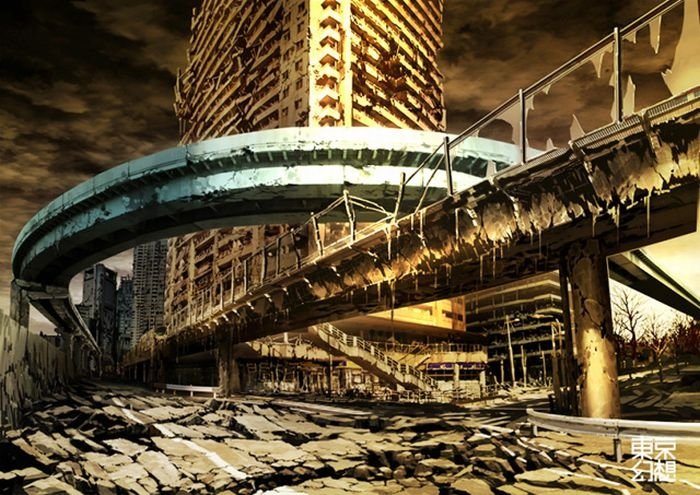|
|
Post-apocalyptic Pictures Of Tokyo
|
Tokyo was originally a small fishing village named Edo. It was first fortified by the Edo clan, in the late 12th century. In 1457, Ōta Dōkan built Edo Castle. In 1590, Tokugawa Ieyasu made Edo his base and when he became shogun in 1603, the town became the center of his nationwide military government. During the subsequent Edo period, Edo grew into one of the largest cities in the world with a population topping one million by the 18th century.
It became the de facto capital of Japan even while the emperor lived in Kyoto, the imperial capital. After about 263 years, the shogunate was overthrown under the banner of restoring imperial rule. In 1869, the 17-year-old Emperor Meiji moved to Edo. Tokyo was already the nation's political and cultural center, and the emperor's residence made it a de facto imperial capital as well with the former Edo Castle becoming the Imperial Palace. The city of Tokyo was established, and continued to be the capital until it was abolished as a municipality in 1943 and merged with the "Metropolitan Prefecture" of Tokyo. Central Tokyo, like Osaka, has been designed since about 1900 to be centered around major train stations in a high-density fashion, so suburban railways were built relatively cheaply at street level and with their own right-of-way. This differs from many cities in the United States that are low-density and automobile-centric. Though expressways have been built in Tokyo, the basic design has not changed.
Tokyo went on to suffer two major catastrophes in the 20th century, but it recovered from both. One was the 1923 Great Kantō earthquake, which left 140,000 dead or missing, and the other was World War II. The bombing of Tokyo in 1944 and 1945, with 75,000 to 200,000 killed and half of the city destroyed, was almost as devastating as the atomic bombs of Hiroshima and Nagasaki combined.
After the war, Tokyo was completely rebuilt, and was showcased to the world during the 1964 Summer Olympics. The 1970s brought new high-rise developments such as Sunshine 60, a new and controversial airport at Narita in 1978 (some distance outside city limits), and a population increase to about 11 million (in the metropolitan area).
|
|









